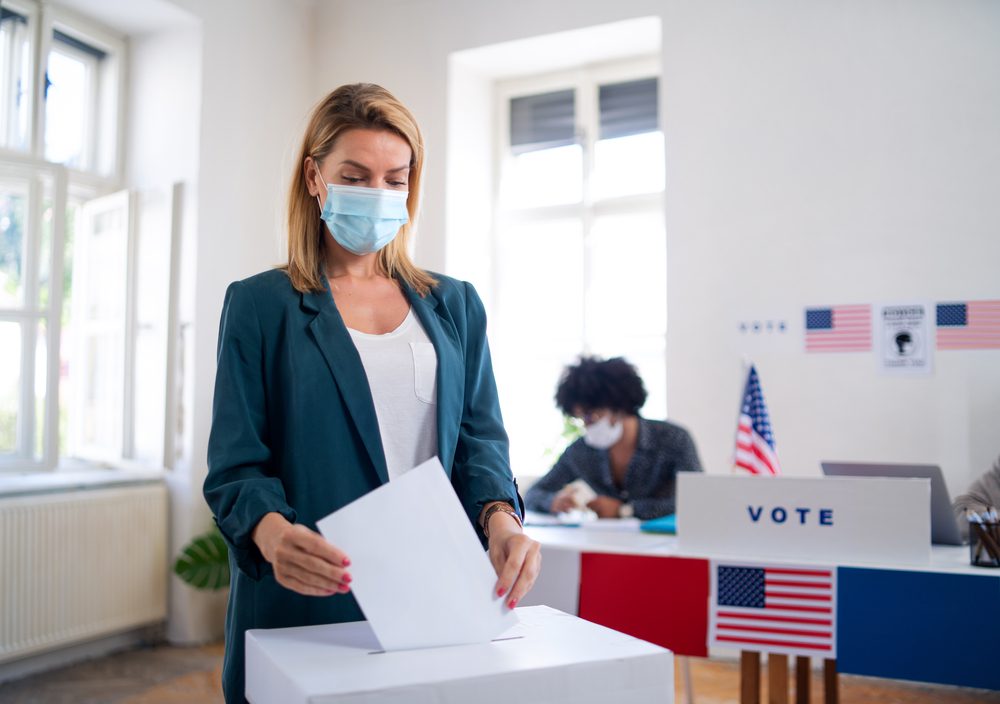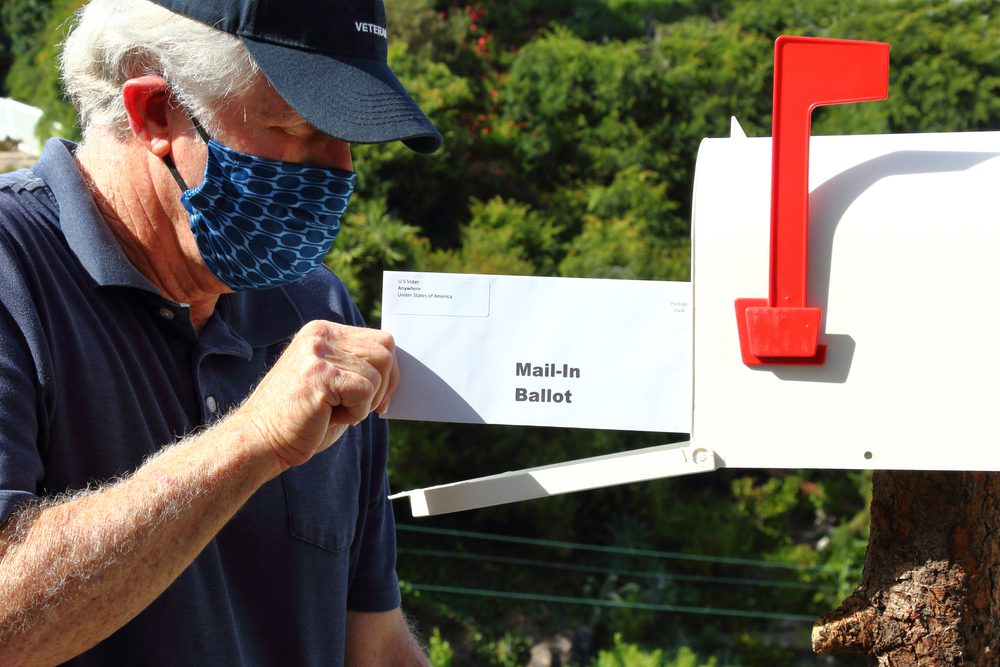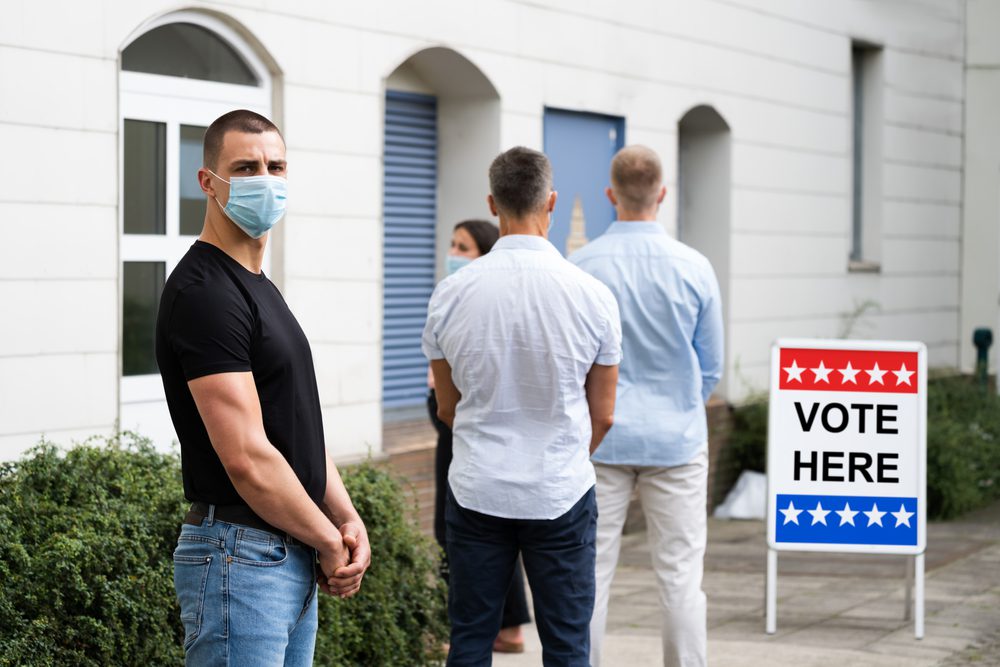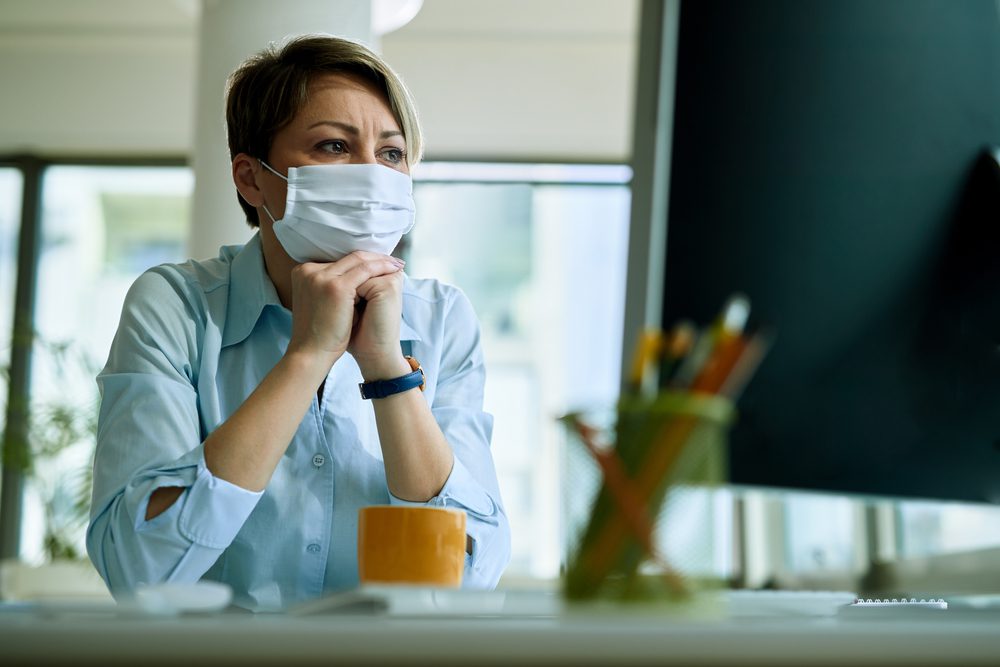
We’re only a week away from the most important political event in the last four years: the election of the next president of the United States. Considering there’s a global pandemic that doesn’t seem to be disappearing anytime soon, it might be a little challenging for voters to participate in-person to this democratic process.
For citizens who want to express their rights to vote despite the COVID-19 pandemic, the Centers for Disease Control and Prevention (CDC) issued some safety guidelines for voting, including recommendations for people working the polls. According to the CDC, “elections with only in-person voting on a single day are higher risk for COVID-19 spread because there will be larger crowds and longer wait times.”
This year vote for health
According to infectious disease expert Amesh A. Adalja, M.D., senior scholar at the Johns Hopkins Center for Health Security, catching the coronavirus when voting in person has similar risks to going grocery shopping, “maybe less so depending on how long you have to stay in line and how crowded it is.” William Schaffner, M.D., an infectious disease specialist and professor at the Vanderbilt University School of Medicine shares the same opinion with regard to the small risk of infection, especially if voters and people working the polls take precautions and comply with certain safety measures.
But what exactly are these safety precautions and measures? Well, to make sure you stay on the safe side but still cast your vote for the next person who’s going to rule the country the following four years, here’s what the CDC recommends you do.
Also, don’t forget to take this poll and make your voice heard! Who do you think will become the next president of the United States? Will Donald Trump or Joe Biden Win 2020 Presidency?

Vote by mail
According to the CDC, the voting option with the lowest risk is voting by mail. If your state allows this possibility and it’s not too late, ask for a mail-in ballot and vote absentee. It’s the safest way to avoid large crowds at the polls and still make your voice heard.
You need to make sure there’s enough time to send your ballot by mail. If time is not on your side, you can return your ballot at an in-person drop-off location such as the county’s election office or county clerk. In certain states, you and a witness might need to sign your envelope, so check the rules beforehand. You might also be interested in this post: Stressed About the Election? These Are 10 Effective Ways to Cope With It.
Vote early
If you can’t vote absentee or via mail, another way to limit contact with large groups of people is to vote early. This alternative allows you plenty of time to pick from various early polling stations and to choose a time when there are fewer people at the polls.
If you don’t know which polling locations are less crowded, check in with your local election office. You could find out real-time information regarding the approximate number of people waiting to cast their votes, the wait time and other useful things. To limit interaction and exposure, some voting stations even have curbside or drive-through voting. Make sure you finish the required registration forms before you go to the polling precincts and bring all the necessary documents with you.

Protect yourself
The CDC and health experts cannot repeat this enough: wash your hands, use face masks and maintain a safe distance. These are the rules you should comply with when voting in person. You’re doing it on a daily basis, anyway (or at least you should be).
- Keep at least six feet of distance from other people, especially if you’re in a poorly ventilated space.
- Wear a face mask that covers your nose and mouth, and even eye protection, especially if other people aren’t wearing masks.
- Don’t touch your mask and face.
- Wash your hands before and after you vote.
If allowed, the CDC also recommends bringing your own black ink pen or a stylus to sign and fill in your ballot. The stylus or similar object can also be used on touchscreen voting machines. According to Dr. Schaffner, if you have to touch the voting machine, use some hand sanitizer. That way, “you’ll have a little bit of that residual alcohol on your fingertips, and that will help kill the virus, if it’s present, on the front-end as well as the back-end.”
Pay attention to informational signs
Polling stations should comply with the election-specific infection control guidelines issued by the CDC. They are required to post signs and visual cues such as floor markings, decals, or chalk marks in visible locations to help voters and workers maintain safety distances, maintain a good entry/exit flow and avoid “bottlenecks”.
In addition, voting booths should be placed so that voters are 6 feet apart when voting, high-touch surfaces such as door handles, registration tables, pens, and clipboards should be constantly and thoroughly disinfected and adequate hygiene supplies such as hand sanitizers should be provided to voters. Some might feel the need to disinfect the voting machines on their own but it’s best to leave it to the workers; you don’t want to damage the equipment with the disinfectants.
RELATED: 10 Health Risks You Need to Stop Taking Amid the Coronavirus Pandemic.

Consider your transportation alternatives
If you can, avoid using the public transportation to go to the polling station, especially during peak hours. If you’re using Lyft or Uber wear a mask; the driver should also wear one, so don’t hesitate to ask them to use face masks during your trip.
If you’re driving your own car but are not alone in the car, you and the rest of the passengers should all wear face masks. In addition, you could also keep the windows down to let fresh air inside the vehicle. It’s impossible to maintain distance in confined spaces such as cars, therefore, they should be properly ventilated. And whatever you do, avoid these 7 Dangerous Mistakes You’re Making Every Time You Use Your Car.
Consider that you might need to wait
It’s not unusual to wait in order to cast your vote. But these are not usual times, so it could take longer to vote than during regular elections. With all the social distancing and safety measures in place, the waiting time might be longer. If that’s the case, it doesn’t hurt to have a backup plan.
If you’ll have to wait more than before, it might be useful to bring a small water bottle with you or snacks, to keep you satiated while you wait in line. If you suffer from diabetes or asthma, have an inhaler or insulin with you, too. When you’re hungry or thirsty, make sure you don’t take your mask off for too long. Speaking of which, check out 7 Most Common Face Mask Mistakes You’re Probably Making.

Make sure you’re in good health
The most severe symptoms of COVID-19 include fever, severe headaches, and coughing. But there are also milder forms that can often be mistaken for seasonal allergies or colds. If you don’t feel ok, whatever the symptoms, it’s best to stay home and avoid interacting with other people. If you’re sick, all the more reason to opt for voting early or absentee.
It might feel awkward and downright scary to go into a crowded place at the moment, even more so when you don’t know what other people have been doing lately, if they complied with the recommended safety guidelines. But if you do everything in your power to make sure you and the people around you stay safe, there’s no reason for you not to exercise the right to vote.
See also 6 Things that Might Happen to Social Security if Trump Gets Reelected.
Recommended COVID-19 safety measures after you vote:
After you cast your vote, wash your hands or use alcohol-based hand sanitizer again. Think of it as a trip to the grocery store, “with maybe a bit more attention paid to where you have to wait in line to vote, how long you have to wait, and washing your hands and/or using hand sanitizer right after voting,” recommends infectious disease expert Aline M. Holmes, D.N.P., R.N., a clinical associate professor at Rutgers University School of Nursing.
Overall, you need to take similar safety precautions as you would normally take for every other outing. The risks of catching COVID-19 should not be higher, and it should not discourage you from making your voice heard, not when the fate of the country is at stake.























